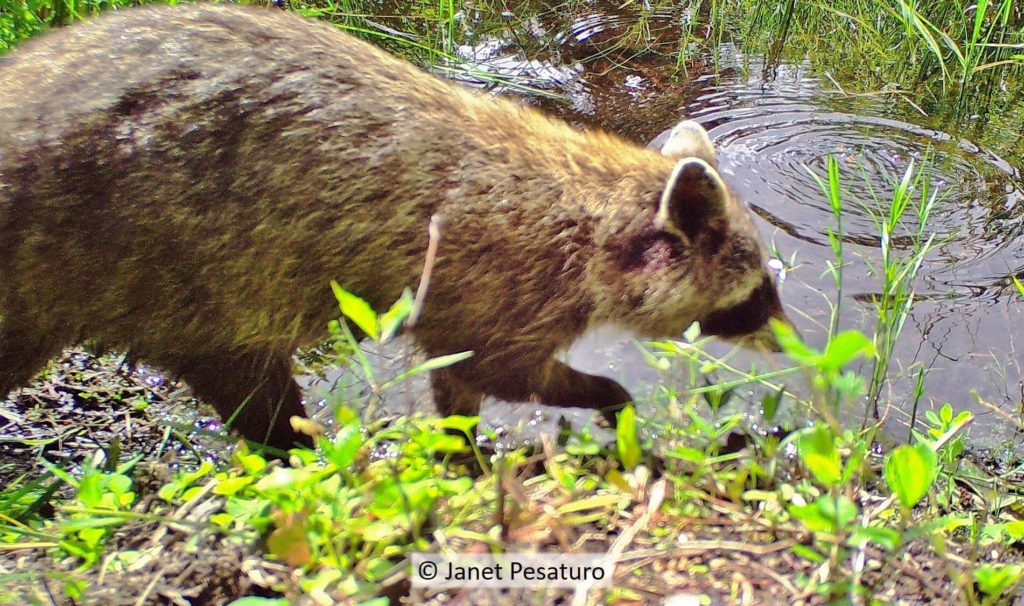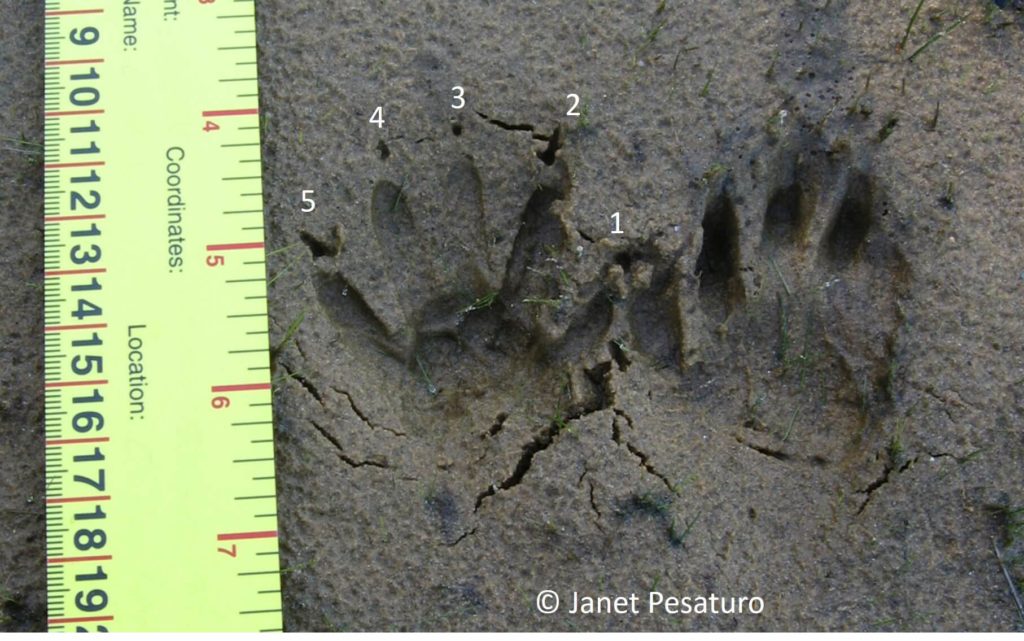Raccoons Foraging at Beaver Pond: Video

Camera trap photo of a raccoon at the edge of a beaver pond, a favorite foraging area.
Raccoons (Procyon lotor) are known for their dexterous hands, in comparison to other members of Carnivora, but when compared to other procyonids, they are intermediate in manipulatory ability. Their fingers are incapable of complete flexion over the palm, and their thumbs are not opposable, so they often grip with a scissor action of the 2nd and 3rd digits (the pointer and middle fingers). What really makes their hands remarkable among mammals is their amazing tactile sensitivity. Sensory receptors in their hands exist at an unusually high density, and an unusually large portion of the raccoon’s cerebral cortex is dedicated to interpreting sensory messages from the hand. They can identify objects just by touching, and their hands are even more sensitive when wet, which means they are uniquely adapted to foraging in swampy areas at night….And night time foraging in water is exactly what you see in the video which follows.

Raccoon tracks, left front and right hind. Digit numbering starts with the thumb.
Watch the video of a family of raccoons foraging near a beaver dam in Massachusetts. Look carefully for their momentary pauses, as they traverse the dam, to feel around in the mud and water. Towards the end of the video, one raccoon takes a longer break to forage, and you can clearly see the characteristic paddling of its superior tactile organs in the water.
Perhaps related to this foraging strategy is the captive raccoon’s habit of “washing” food in water. But wild raccoons are not known to do this, and it’s thought that for captive raccoons, this activity is an outlet for their instinct to forage in water. In other words, captive raccoons are bored out of their clever procyonid minds, so they engage in apparently meaningless behavior which simulates necessary, purposeful activity of wild raccoons.
Raccoons Foraging – Video
Sources:
- Iwaniuk, A. N. and I. Q. Whishaw. “How Skilled are the Limb Movements of the Raccoon (Procyon lotor)?” Behavioural Brain Research. 99 (1999): 35-44.
- Welker, W. I. and S. Seidenstein. “Somatic Sensory Representation in the Cerebral Cortex of the Raccoon (Procyon lotor).” Journal of Comparative Neurology. 111, no. 3 (1959): 469-501.
- Zollmand, P. and R. K. Winkelmann. “The Sensory Innervation of the Common North American Raccoon (Procyon lotor)”. Journal of Comparative Neurology. 119, no. 2 (1962): 149-157.

Comments
Raccoons Foraging at Beaver Pond: Video — No Comments
HTML tags allowed in your comment: <a href="" title=""> <abbr title=""> <acronym title=""> <b> <blockquote cite=""> <cite> <code> <del datetime=""> <em> <i> <q cite=""> <s> <strike> <strong>